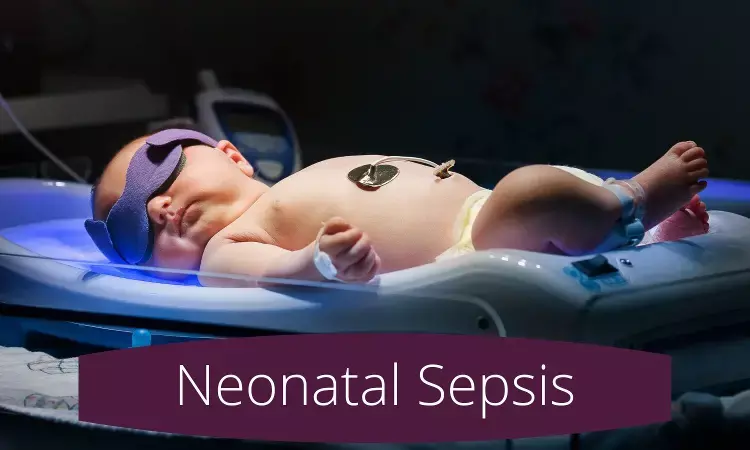- Home
- Medical news & Guidelines
- Anesthesiology
- Cardiology and CTVS
- Critical Care
- Dentistry
- Dermatology
- Diabetes and Endocrinology
- ENT
- Gastroenterology
- Medicine
- Nephrology
- Neurology
- Obstretics-Gynaecology
- Oncology
- Ophthalmology
- Orthopaedics
- Pediatrics-Neonatology
- Psychiatry
- Pulmonology
- Radiology
- Surgery
- Urology
- Laboratory Medicine
- Diet
- Nursing
- Paramedical
- Physiotherapy
- Health news
- Fact Check
- Bone Health Fact Check
- Brain Health Fact Check
- Cancer Related Fact Check
- Child Care Fact Check
- Dental and oral health fact check
- Diabetes and metabolic health fact check
- Diet and Nutrition Fact Check
- Eye and ENT Care Fact Check
- Fitness fact check
- Gut health fact check
- Heart health fact check
- Kidney health fact check
- Medical education fact check
- Men's health fact check
- Respiratory fact check
- Skin and hair care fact check
- Vaccine and Immunization fact check
- Women's health fact check
- AYUSH
- State News
- Andaman and Nicobar Islands
- Andhra Pradesh
- Arunachal Pradesh
- Assam
- Bihar
- Chandigarh
- Chattisgarh
- Dadra and Nagar Haveli
- Daman and Diu
- Delhi
- Goa
- Gujarat
- Haryana
- Himachal Pradesh
- Jammu & Kashmir
- Jharkhand
- Karnataka
- Kerala
- Ladakh
- Lakshadweep
- Madhya Pradesh
- Maharashtra
- Manipur
- Meghalaya
- Mizoram
- Nagaland
- Odisha
- Puducherry
- Punjab
- Rajasthan
- Sikkim
- Tamil Nadu
- Telangana
- Tripura
- Uttar Pradesh
- Uttrakhand
- West Bengal
- Medical Education
- Industry
Procalcitonin and CRP effective biomarkers of neonatal sepsis: BMJ

A new study by Chris Rees and team found that in low-and middle-income countries (LMICs), procalcitonin (PCT) and C-reactive protein (CRP) demonstrated good neonatal sepsis discriminatory value. The findings of this study were published in British Medical Journal - Paediatrics Open.
Particularly in low- and middle-income countries where traditional diagnostic methods are usually unavailable but illness burden is high, biomarkers may improve diagnostic capacity for prevalent pediatric infections. There is a paucity of knowledge on the full diagnostic potential of frequently used biomarkers for newborn sepsis in LMICs. This study's goal was to thoroughly analyze the available data on biomarkers to see how well they might diagnose newborn sepsis in LMICs.
A systematic review and meta-analysis of studies was conducted reporting the diagnostic performance of erythrocyte sedimentation rate (ESR), C reactive protein, white blood cell count (WBC), and procalcitonin for neonatal sepsis. The studies were published in English, French, Spanish, Dutch, German, and Arabic. Each biomarker's pooled test features and area under the curve (AUC) were determined and compared to the respective article's definitions of clinical sepsis or blood cultures as reference standards.
The key findings of this study were:
A total of 23 179 newborns were included in 134 studies that examined biomarkers in children out of 6570 total research.
80 studies, or 59.7%, were carried out in LMICs.
When utilizing blood culture as the reference standard in LMICs, CRP of ≥60 mg/L (AUC 0.87, 95% CI 0.76 to 0.91) among 1339 newborns and PCT of ≥0.5 ng/mL (AUC 0.87, 95% CI 0.70 to 0.92) among 617 neonates showed the highest discriminating value for the diagnosis of neonatal sepsis.
In conclusion, in LMICs, CRP and PCT provided high discriminatory value for identifying newborn sepsis. To identify newborn sepsis in LMICs, however, none of the examined biomarkers exhibited acceptable specificity or discriminatory value. Clinical prediction algorithms should include biomarkers in future research done in LMICs to provide the best possible diagnostic and discriminatory capabilities for newborn sepsis.
Reference:
Rees, C. A., Lim, J., Westbrook, A. L., El Helou, R., Schmid, A., Rubin-Smith, J., Shreeve, K., Rotman, C., Govindapillai, S., Dorney, K., & Niescierenko, M. (2023). Systematic review and meta-analysis of the diagnostic value of four biomarkers in detecting neonatal sepsis in low- and middle-income countries. In BMJ Paediatrics Open (Vol. 7, Issue 1, p. e001627). BMJ. https://doi.org/10.1136/bmjpo-2022-001627
Neuroscience Masters graduate
Jacinthlyn Sylvia, a Neuroscience Master's graduate from Chennai has worked extensively in deciphering the neurobiology of cognition and motor control in aging. She also has spread-out exposure to Neurosurgery from her Bachelor’s. She is currently involved in active Neuro-Oncology research. She is an upcoming neuroscientist with a fiery passion for writing. Her news cover at Medical Dialogues feature recent discoveries and updates from the healthcare and biomedical research fields. She can be reached at editorial@medicaldialogues.in
Dr Kamal Kant Kohli-MBBS, DTCD- a chest specialist with more than 30 years of practice and a flair for writing clinical articles, Dr Kamal Kant Kohli joined Medical Dialogues as a Chief Editor of Medical News. Besides writing articles, as an editor, he proofreads and verifies all the medical content published on Medical Dialogues including those coming from journals, studies,medical conferences,guidelines etc. Email: drkohli@medicaldialogues.in. Contact no. 011-43720751


